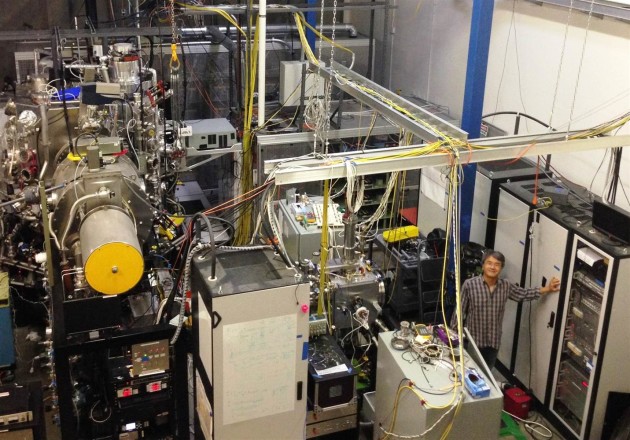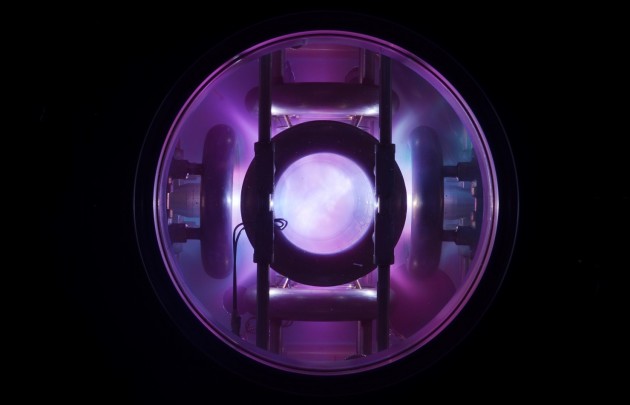After languishing in limbo for most of the last year, EMC2 Fusion Development Corp. says it’s back in business with an unorthodox concept for nuclear fusion power plants.
The concept is variously known as Polywell fusion, inertial electrostatic confinement or magnetic cusp confinement..
If anyone ever finds a way to harness fusion – the reaction that powers the sun – it could usher in an era of low-cost, plentiful, relatively clean energy. Lots of research teams are trying to do it, ranging from the international ITER consortium to private companies such as Lockheed Martin, Tri Alpha Energy, General Fusion, Helion Energy, LPPFusion and EMC2. So far, no one’s produced a net gain in energy.
EMC2’s Polywell approach aims to use a specially designed high-voltage grid to trap ions in a plasma and drive them together so forcefully that they spark a fusion reaction. Beginning in 2008, the Navy gave EMC2 a cumulative total of $12 million in funding to study the approach. That support was discontinued in 2014.
EMC2 Fusion lab
A view of EMC2 Fusion’s lab space in San Diego shows the WB-8 prototype reactor on the left side and a Wiffle-Ball containment test device in the middle of the image, with EMC2 Fusion President Jaeyoung Park standing beside it. (Credit: EMC2 Fusion)
EMC2 Fusion’s president and chief scientist, Jaeyoung Park, then tried to raise $30 million in private funding for a follow-up research program. But he ran into a big roadblock: Citing export control regulations, the Navy said the technology was too sensitive to be shared with outsiders.

The tussle with federal officials went on for months, Park said. In the meantime, he had to hold off from seeking investment. “I was almost paranoid about watching every word,” he told GeekWire.
Park said his concerns were eased this week, thanks to a reassuring letter from the State Department. In an interview with NextBigFuture, he confirmed that a patent application for EMC2’s technology has been published at last, and that he’s once again looking for investment.
Either it works or it does not. We will find out in three years.
The patent application identifies a “missing link” that may have held back EMC2’s past experiments, Park said. In his view, what’s needed is a high-power startup system that can quickly achieve high pressure and strong confinement of the plasma.
“You cannot create heating if you’re in poor confinement,” Park told GeekWire.
The $30 million, three-year program that Park wants to pursue would be aimed at demonstrating a heating system that uses beams of electrons. “After 18 test devices, EMC2 is now down to one specific design of Polywell reactor,” he wrote in an email. “Either it works or it does not. We will find out in three years.”
If it works, EMC2 would seek additional funding to build a scaled-up device that could produce net-gain energy and open the way for commercialization. If not, it’s back to the drawing board – which is an old story for fusion researchers.
For more about the prospects for private-sector fusion research, check out Alan Boyle’s in-depth report for Science News.
